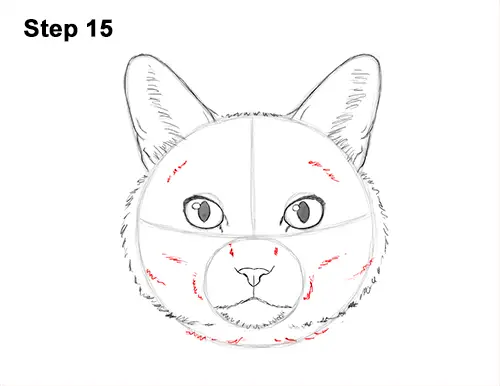
Step 15: Draw a series of short strokes within the shape of the head to emphasize the cat's fur. Draw some strokes between each eye and the nose to create the bridge of the nose. Add some strokes on either side of the mouth to make the shape of the muzzle a little wider. Add some strokes on the cheeks to emphasize the structure of the tabby cat's face. Draw some strokes along the lower edge of the main circle for a bit of the neck.
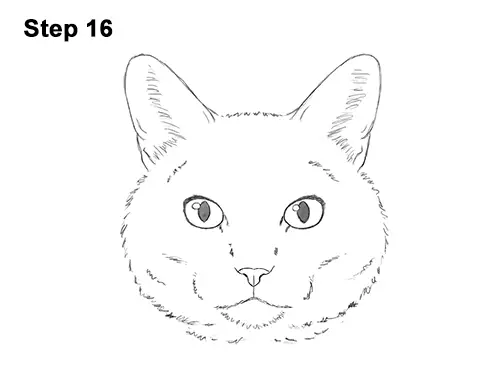
Step 16: For a cleaner look, erase as much as you can of the initial guide lines. Don't worry about erasing all of the guides. It's okay to leave some behind. Re-draw any final sketch lines you may have accidentally erased.
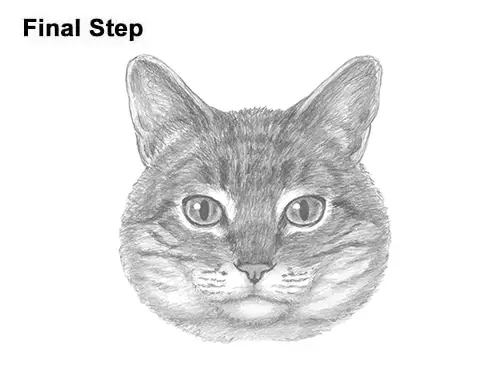
Final Step: Add some shading to give your cat for the distinctive tabby pattern. You can also skip this step for a white cat. Add some strokes around the eyes. This area will be blank. Add some stripes on the sides of the head and on the forehead. For a more detailed guide on how to shade, check out this tutorial: How to shade.
Shade the cat's ears using a dark value around the edges. Inside, use lighter, longer strokes for the fur found there. Use a very dark value around the nose, the bridge of the nose and the stripes on the forehead. Shade the top part of the nose using tiny strokes to duplicate the texture of the fur. Don't use smooth shading. Cover the tabby cat's head in a series of short strokes of different value for the furry texture. Yes, this method of shading can take a VERY long time, so be patient and take breaks.
Add a few small, dark spots on the outer edges of the muzzle for the base of the cat's whiskers. Start shading lightly, and then gradually add darker strokes and more value until you reach a level you like. The strokes should go in the general direction of the tabby cat's fur. They should radiate outward from the middle. Separate each individual stroke a bit so that the white of the paper comes through and creates a more fur-like texture.
Tabby cats usually have lighter fur on the lower half of their head, so don't add too much value there. It's always a good idea to use reference as you draw for a more accurate tabby cat pattern. If you have a pet tabby or a similar cat breed, try to duplicate its fur on your drawing. Shade the eyes but don't overlap the tiny glare circles. Use a smooth value that's lighter than the pupils for the irises. Make the outer edges of the irises slightly lighter to make the eyes rounder.
Add some value to the lower part of the tabby cat's head to create shadows and give the head more dimension and volume. Continue to slowly build up the value by adding more and more strokes until you're happy with the result. Make the stripes on the sides and on the forehead dark to emphasize the tabby pattern. Don't forget to pause the video to draw at your own pace.
Thanks for visiting! Subscribe to the How2DrawAnimals YouTube Channel for a new tutorial every week.
To learn how to draw popular cartoon characters, visit EasyDrawingTutorials.com.
RELATED TUTORIALS
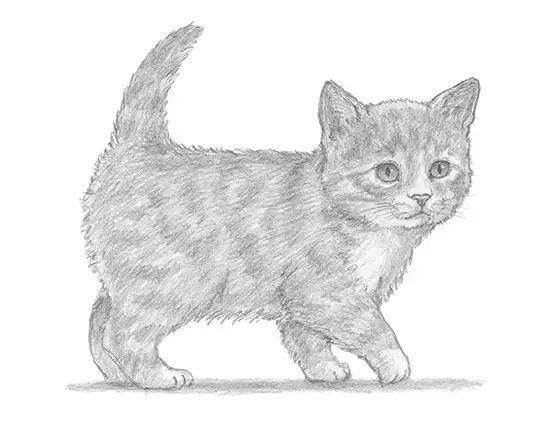 |
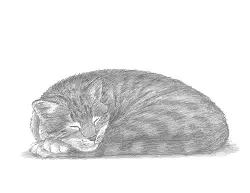 |
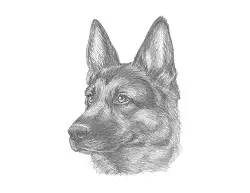 |







